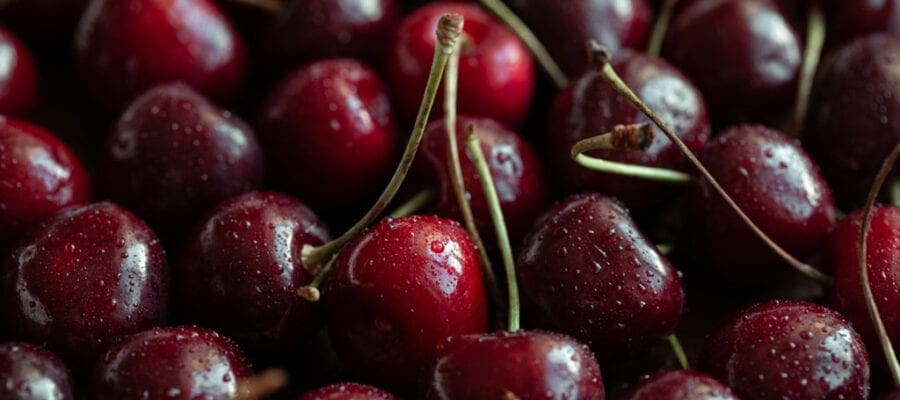The wonderful taste of ripe, juicy cherries, whether on their own or in tarts, pies and jams, is simply mouth watering; and thankfully this is one fruit that has everything going for it as far as our climate is concerned. However, like many other fruits, the flowers are prone to frost and so it is important not to plant them in exposed sites.
The one drawback that used to be associated with growing this luscious fruit was the sheer size of the trees – they were huge. But now with new dwarfing rootstocks such as ‘Colt’ and more recently ‘Gisela 5’ and ‘Tabel’, even this problem has been removed – trees of little more than 2m (6ft 6in) are possible.
It has also helped to solve one other problem – that of birds, which simply love the fruit as much as we do, but with smaller trees we are now able to cover and protect the tree, or at least the best of the bunches as they ripen.
Cherry varieties
There are two main types, sweet cherries and sour or cooking varieties. The most familiar varieties are:
- ‘Morello’
A sour or culinary variety. - ‘Stella’
A sweet type ripening in late July/early August. - ‘Celeste’
This is a self-fertile variety which is said to be naturally compact. - ‘Summer Sun’
Is a modern red-fruited variety which is good for areas which are perhaps a little colder and more exposed. - ‘Merton Glory’
This offers an alternative to the usual red types. The fruits are yellow flushed with orange and large, but the tree is not self fertile so requires a pollination partner. Look out too for fan trained trees and also ‘family’ trees with more than one variety grafted on to the same roots.

Cherry growing tips
Although not fussy, cherries prefer well-drained soil in sun and as mentioned above it is important not to plant in parts of the garden where frost may collect, such as at the bottom of a slope, since the flowers may be damaged by the frost.
In colder gardens grow cherries as fan trained trees and for convenience it is best to pay a little more and buy a ready-trained fan rather than trying to train it yourself.
Pruning should be kept to a minimum and carried out as for plums. This must also be done in the summer when the risk of bacterial canker and silver leaf entering the pruning cuts is reduced.
Cover the fruit with netting as it begins to ripen to keep the birds at bay – much easier with a smaller tree – or they will strip it within days. Harvest as soon as they are ripe and if you intend to keep them for a few days before eating, leave the stalks attached.
Feed your tree with a thick mulch of well-rotted garden compost or manure in the spring. This will also help to maintain the soil in good condition and hold water during the summer months. Apply a dressing of superphosphate (available from your garden centre) every second year.
Scrumptious recipes for your homegrown cherries
More on cherries
More grow guides
For more growing tips and guides, you should subscribe to Kitchen Garden – you’ll receive free seeds with every single issue too!











